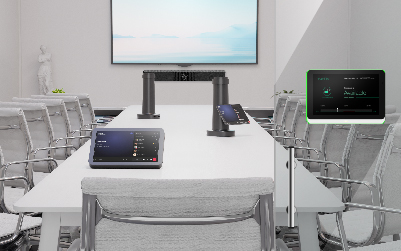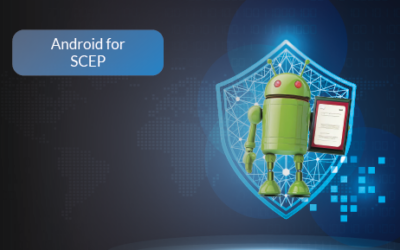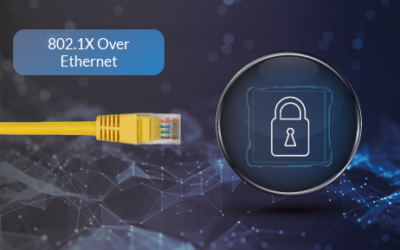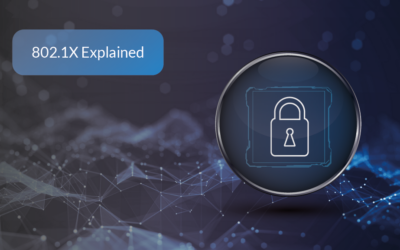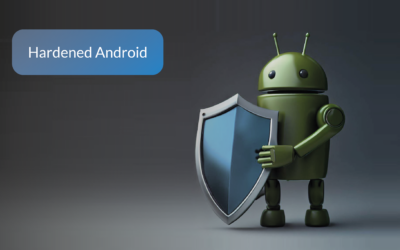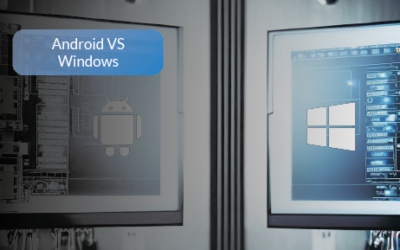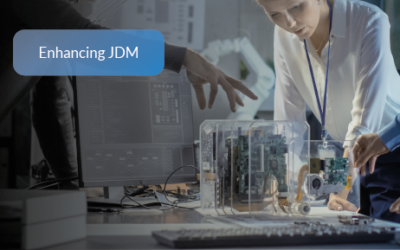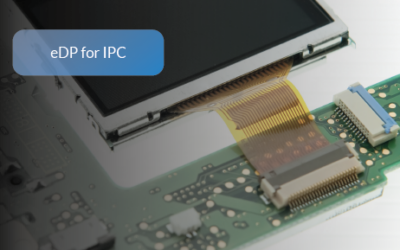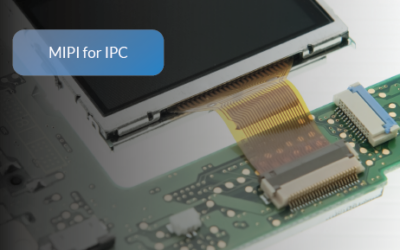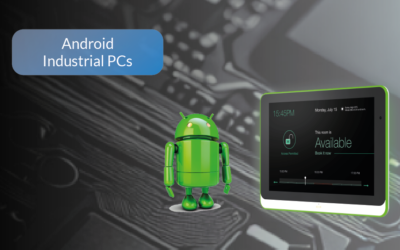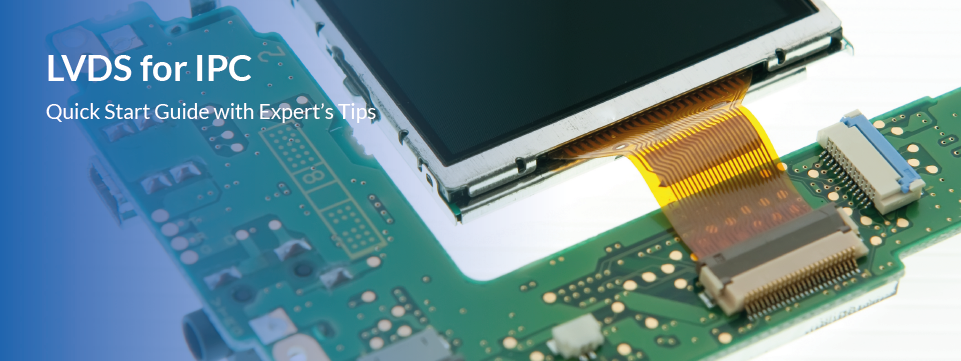
LVDS Made Simple: Quick Start Guide with Expert’s Tips
Introduction to LVDS
Welcome back to our Quick Start Guide series! We’ve previously explored the high-speed interfaces of MIPI and eDP, crucial in mobile devices and embedded systems respectively. Today, we’re diving into another key player in the technology landscape – LVDS, or Low Voltage Differential Signaling. This high-speed interface is particularly important in a wide range of applications, from computers to telecommunications and industrial equipment. But what exactly is LVDS, and why is it important? Let’s find out.
What is LVDS?
LVDS is particularly suitable for applications that require high data rates and low power consumption. It’s an excellent choice for applications that require fast data transmission and noise resistance. Whether you’re designing a high-speed data communication system, a large display panel, or a high-resolution printer, LVDS can provide a powerful and efficient solution for data transmission. As a general rule of thumb when selecting an interface for Industrial PCs (IPC), consider LVDS for larger device screens when choosing display interface technologies.
When and Where to Use LVDS?
LVDS is particularly suitable for applications that require high data rates and low power consumption. It’s an excellent choice for applications that require fast data transmission and noise resistance. Whether you’re designing a high-speed data communication system, a large display panel, or a high-resolution printer, LVDS can provide a powerful and efficient solution for data transmission. For instance, LVDS is an ideal choice for large devices such as digital whiteboards, kiosks, and large panel PCs, where high data rates and noise resistance are crucial.
Features and Benefits of LVDS
LVDS comes with a host of benefits that make it a top choice for data communication. Here are some key features:
- High-Speed Interface: LVDS can transmit data at high speeds, making it suitable for applications that require fast data transmission, such as video data for high-resolution displays.
- Low-Power Operation: LVDS operates at low voltage levels, which results in lower power consumption compared to other data transmission standards. This makes LVDS an energy-efficient choice.
- Noise Resistance: LVDS uses differential signaling, where data is transmitted over two complementary signals. This method improves noise immunity, as noise picked up by the transmission line will be common to both signals and can be canceled out at the receiver.
Practical Insights: Optimizing LVDS Interface for High Bandwidth
When it comes to implementing LVDS in your projects, there are a few practical tips to keep in mind:
- Cable Length: The ideal cable length for LVDS can vary depending on the specific application and data rate. However, keeping the cable as short as possible can help maintain signal integrity and reduce potential interference.
- Cable Quality: The quality of the cable is important to handle the voltage and data rates required by LVDS. Using a high-quality cable can ensure stable voltage delivery and maintain signal integrity, reducing the risk of data errors.
Conclusion
LVDS is a powerful interface technology that’s shaping the future of data communication. By implementing the expert’s tips from this article, you can ensure that your LVDS signals will deliver high-speed, low-power, and noise-resistant performance. With its robust capabilities, it’s no wonder LVDS is becoming a popular choice in the tech industry, especially for applications that require high bandwidth. This wraps up our Quick Start Guide series on interface technologies. We hope you found it informative and helpful!
For more detailed information on how LVDS compares with other interface technologies like MIPI and eDP, check out our comprehensive comparison article – MIPI vs. eDP vs. LVDS.
Primax and LV-Tron Announce Strategic Partnership to Revolutionize Smart Meeting Solutions
Primax Electronics and LV-Tron (a division of IAdea) have officially announced their strategic partnership to invest in and develop cutting-edge smart meeting solutions. This collaboration aims to position both companies as leaders in the smart meeting industry, with...
Understanding SCEP: Its Role in Android Security
Understanding SCEP: Its Role in Android Security Simple Certificate Enrollment Protocol (SCEP) plays a vital role in digital security. Within Android, SCEP has become an essential tool, simplifying the once complex process of certificate enrollment. This article...
802.1X over Ethernet: A Key Solution for a More Secure Network
802.1X over Ethernet: A Key Solution for a More Secure Network Introduction to 802.1X over Ethernet In an era where network security is paramount across various industries, understanding and implementing robust security measures is essential. Last time, we delved into...
IEEE 802.1X Explained: A Plainspeak Guide to Securing Your Network
IEEE 802.1X Explained: A Plainspeak Guide to Securing Your Network Introduction to 802.1X 802.1X (The "X" is typically capitalized) is a cornerstone of modern network security and one of the most widely adopted security measures today. Here's why: Popularity: 802.1X...
A Step-by-Step Guide to Understanding Hardened Android
A Step-by-Step Guide to Understanding Hardened Android Introduction to Hardened Android In the world of mobile operating systems, Android stands out for its open-source nature, which allows for extensive customization. However, this flexibility can sometimes lead to...
Revolutionizing Business Collaboration with LV-Tron’s Immersive Smart Conference Rooms
rRevolutionizing Business Collaboration with LV-Tron's Immersive Smart Conference Rooms Introduction: Unveiling the Power of Smart Conference Rooms In the dynamic landscape of the digital age, the traditional conference room has been transformed into a "smart...
Android vs Windows: A User’s Guide to Choosing the Right OS
Android vs Windows: A User's Guide to Choosing the Right OS Choosing the right operating system for industrial PCs is crucial. This article provides a comprehensive comparison between Android and Windows, focusing on CPU choices, memory usage, and storage usage....
Joint Development Manufacturing (JDM): The LV-Tron Advantage
Joint Development Manufacturing: The LV-Tron Advantage In the tech industry, Joint Development Manufacturing (JDM) is a game-changer. It offers numerous benefits such as cost savings, faster time to market, and access to specialized expertise. But at LV-Tron, we don't...
eDP Made Simple: Quick Start Guide with Expert’s Tips
eDP Made Simple: Quick Start Guide with Expert’s Tips Introduction to eDP Welcome back to our Quick Start Guide series! In our previous installments, we delved into the world of MIPI, a high-speed interface crucial in mobile devices and small devices, and LVDS, ideal...
MIPI Made Simple: Quick Start Guide with Expert’s Tips
MIPI Made Simple: Quick Start Guide with Expert's Tips Introduction to MIPI Welcome to our Quick Start Guide series! In this first installment, we’re diving into the world of MIPI, or Mobile Industry Processor Interface. This high-speed interface is a key player in...
Conference Room Technology 2023: The Innovations You Can’t Ignore
Conference Room Technology 2023: The Innovations You Can't Ignore As we navigate the digital era, the landscape of conference room technology is evolving at an unprecedented pace. This rapid progression has ushered in a host of new software, integrations, and...
Overcoming Challenges in Shifting from Traditional to Hybrid Meetings
Overcoming Challenges in Shifting from Traditional to Hybrid Meetings The digital era has ushered in a new trend of hybrid meetings, which involve both internal employees and external teams from other companies. These meetings offer significant benefits, including...
Smart Meeting Room
The Essential Hardware for a Smart Meeting Room The Rising Trend of Smart Meetings: Embracing the Digital Era According to the 63rd International Meetings Statistics Report released by the Union of International Organizations (UIA) in 2022, the number of meetings is...
Understanding Android Industrial PCs: A Detailed Overview
Understanding Android Industrial Panel PCs: A Detailed Overview In the rapidly evolving world of industrial automation, Android Panel PCs have emerged as a game-changer. These powerful devices are transforming the way industries operate, offering unparalleled...
Comprehensive AIoT Industrial Computer Terminology Guide
Discover Optimized Solutions for Your Business Advantages. Contact Us Today!

